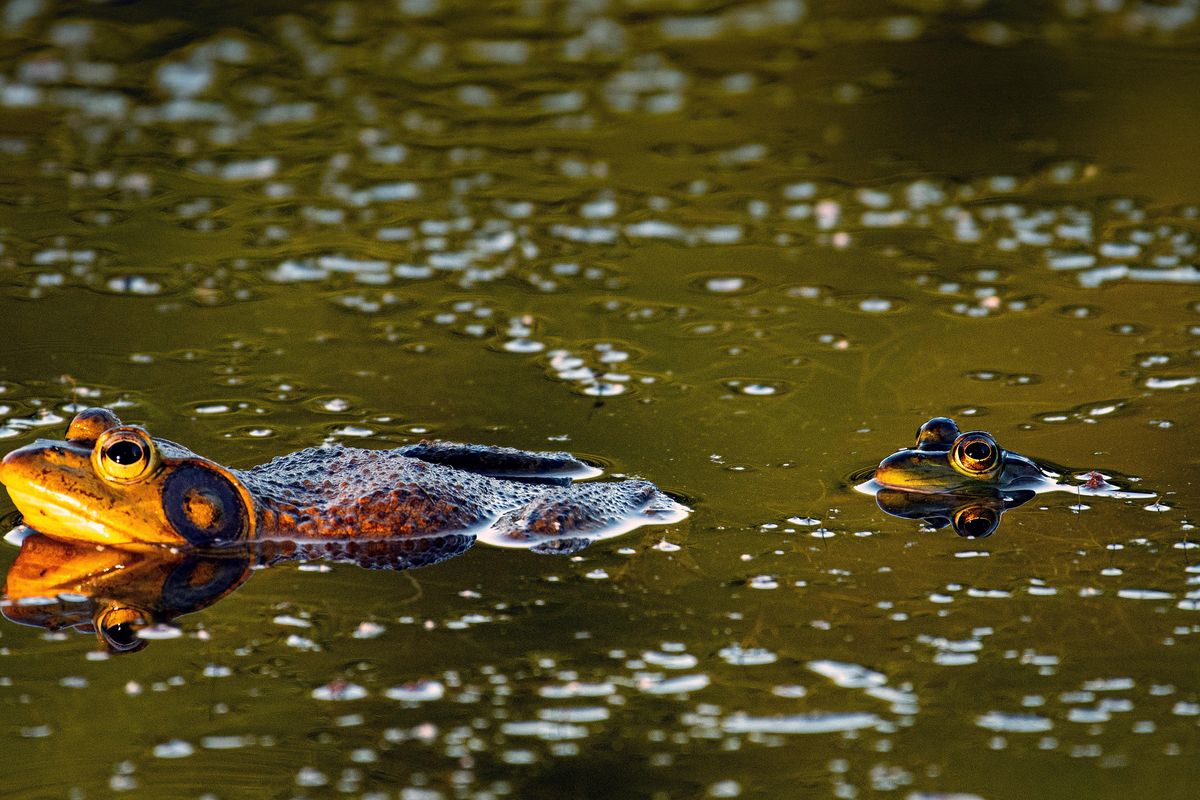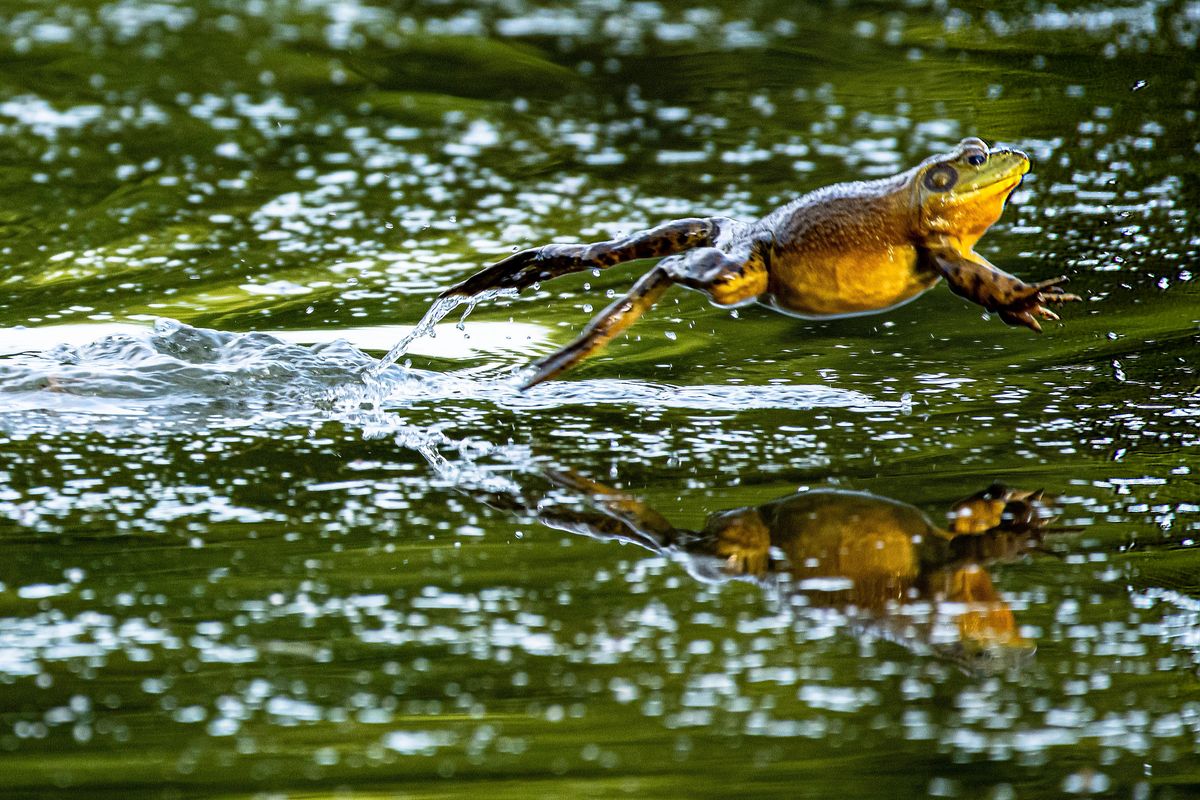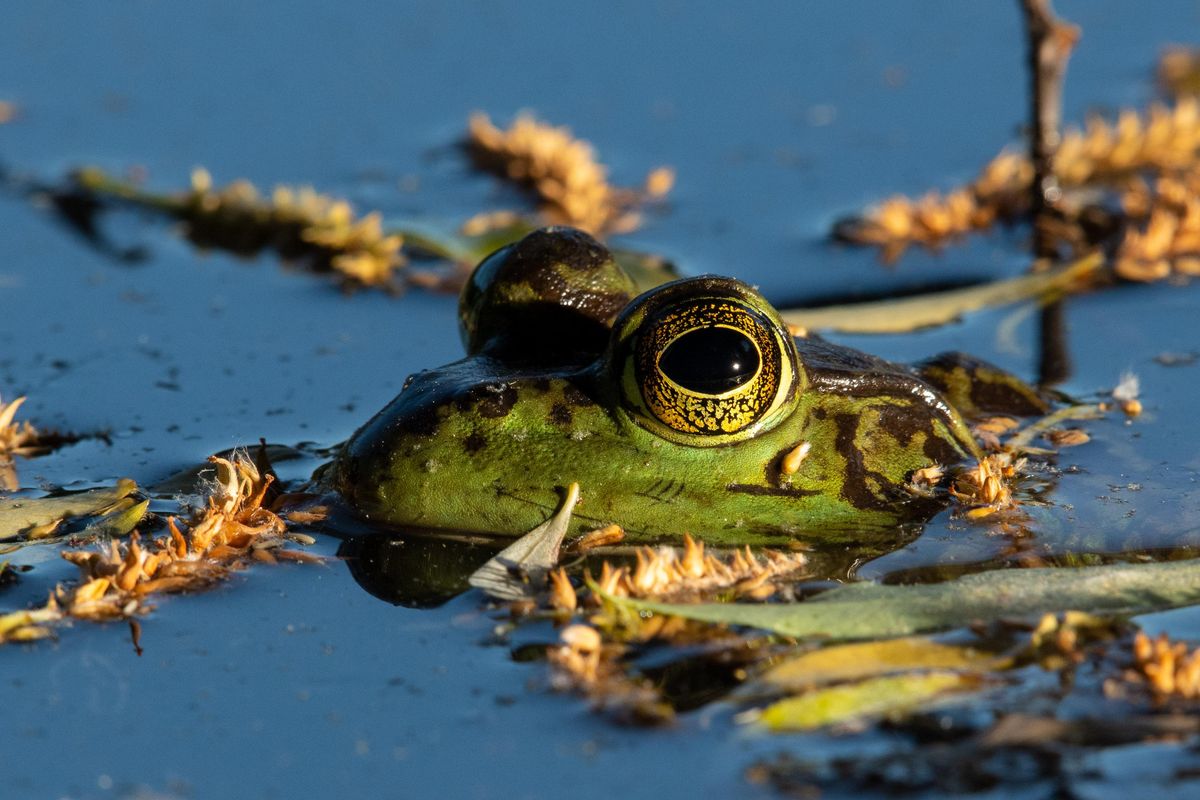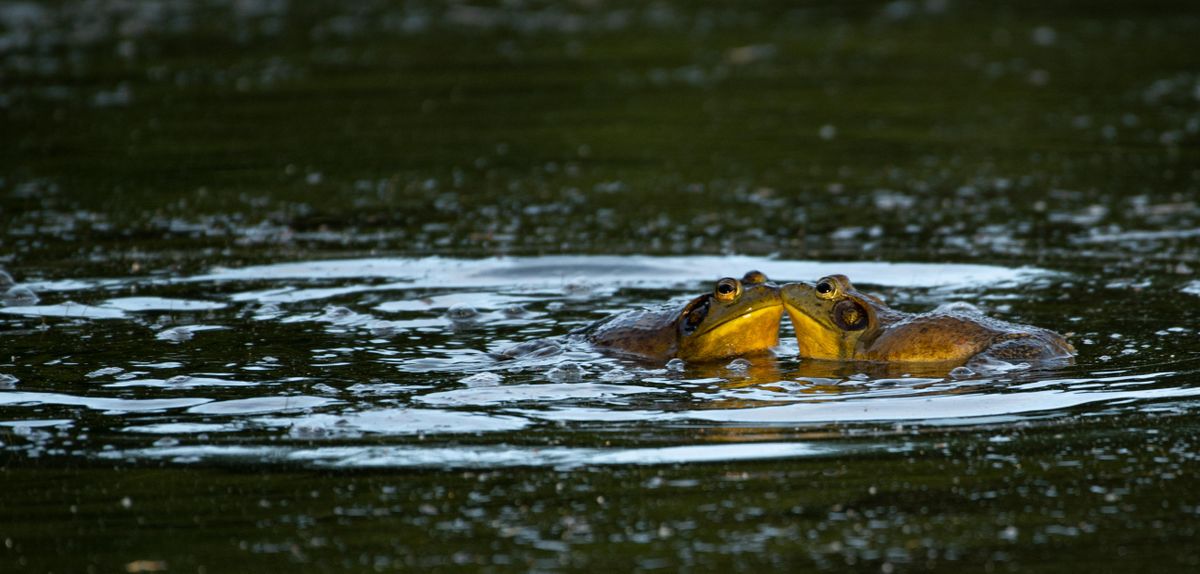American bullfrogs seem fun, but native wildlife is croaking

Sheri Faulks has been setting up her easel at Cannon Hill Park for three years now. She likes painting the dragonflies and turtles. She likes listening to the sounds of the bullfrogs mating in the spring.
“It’s beautiful, it’s a really low, throaty sound,” Faulks said. “I’m sorry if people don’t like the sound of bullfrogs, but I don’t know, move some place where there aren’t any bullfrogs.”
Despite posted signs instructing visitors to leave the wildlife alone, Faulks said she frequently sees children with containers, catching or releasing. The problem is the American bullfrog has been a wanted fugitive in Washington since 2004.
“You cannot have a live bullfrog in your possession, which includes if you have your own garden pond and you have bullfrogs in it,” Allen Pleus, manager of the Washington Department of Fish and Wildlife’s Aquatic Invasive Species Unit, said. “Technically you’re in possession of them, whether you introduced them or they found the pond, that’s technically illegal, but there is nobody going around from yard to yard looking for bullfrogs, I can assure you that.”
Bullfrogs, an invasive species, have found a home in Cannon Hill Pond on Spokane’s South Hill. Because of their large size and voracious appetite, bullfrogs outcompete and prey upon many indigenous species such as smaller native frogs, turtles and young water fowl. (Colin Mulvany / The Spokesman-Review)Buy a print of this photo
Bullfrogs were originally introduced to Washington in the ’30s as a potential food source and money-making enterprise.
“Since then obviously those initial populations have exploded, as well as they’re quite the common pet,” Pleus said. “They’re very easily purchased even now over the internet even though they are prohibited in our state from possession.”
The problem with the bullfrogs is they are extremely efficient predators capable of eating whatever they can fit in their mouths. A mama bullfrog produces anywhere between 6,000 to 20,000 tadpoles. The frogs are a serious threat to indigenous species, such as Western pond turtles.
“Even though the turtles may reproduce successfully, the small turtles become food for the frogs,” Pleus said. “So whenever we’re doing Western pond turtle restoration, we try to do eradication of any bullfrogs in the area.”
Pleus said the bottom line is that people should not keep bullfrogs as pets, but if they already have them, they should not reintroduce them to nature.
“You may think you’re saving that one tadpole or that one frog but what you’re doing is you’re killing thousands of our native species if you release one pet,” Pleus said.












